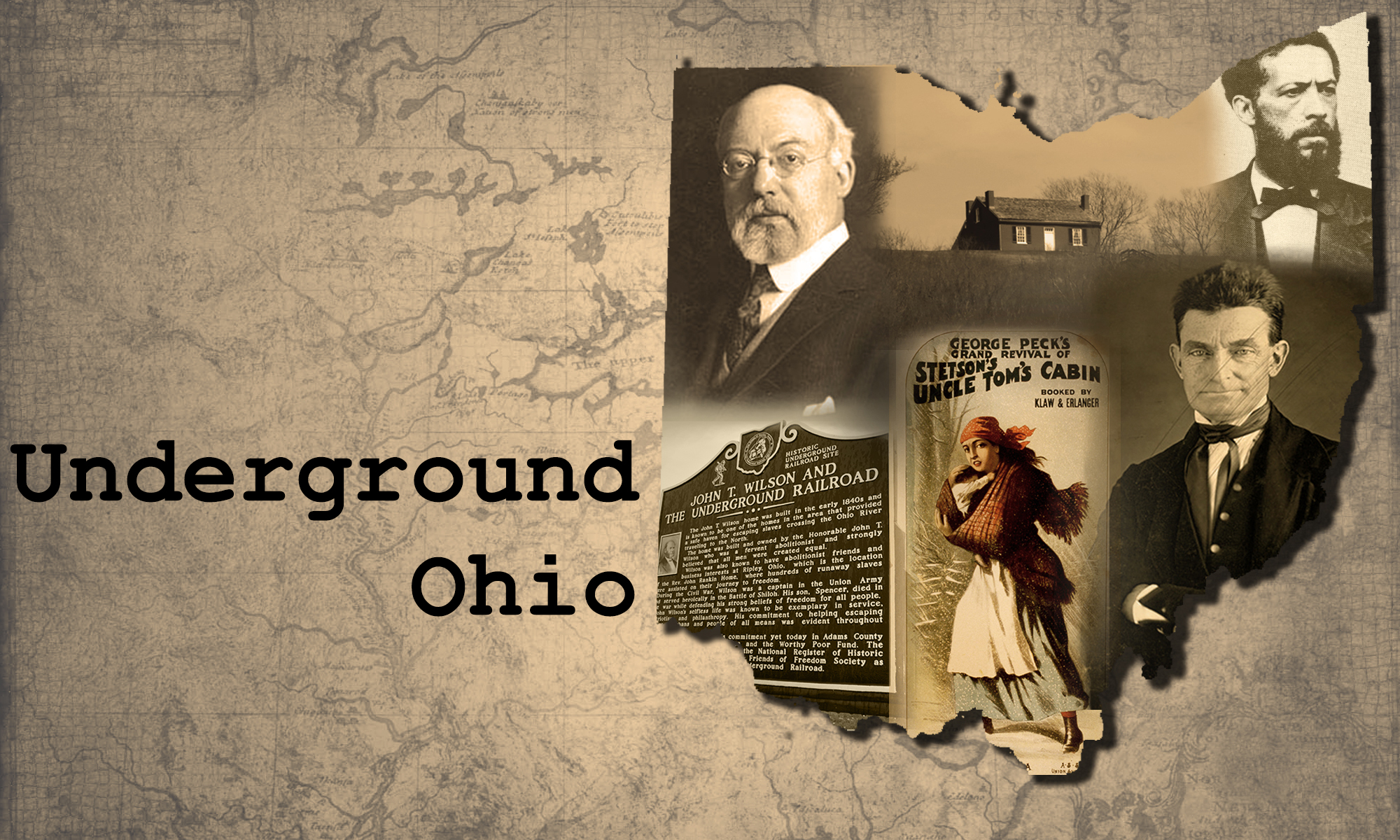There were dozens of key figures who were vital to and played a pivotal role in the Underground Railroad in Ohio. From abolitionists to conductors to escaped slaves, their stories are detailed in the database below.
A
David Adams
David Adams
David Adams, a free black barber in Findlay Ohio, watched his father and grandfather assist fugitive slaves as a child in Urbana. In the 1850s he conducted scores of “passengers” northward from Findlay.
George Willison Adams George Willison Adams G.W. Adams was an abolitionist merchant who supported the Underground Railroad through Dresden in Muskingum County. After inheriting land and slaves from his father, he freed the slaves and moved west to live in a free area. Out of altruism, he and his wife built a 29 room mansion that became one of the state’s largest Underground Railroad stops. It would come to be known as Prospect Place. 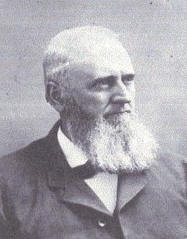
Lewis Adams
Lewis Adams
Adams was a free black man and a founding member of the St. Paul African Methodist Episcopal Church. He served as a conductor alongside his father in law, Francis Reno, and they guided slaves through the county and offered shelter in his home.
James Ashley
James Ashley
Ashely pursued a political career that led to his authorship of the Thirteenth Amendment, which abolished slavery in 1865.
B
Benjamin Bartholomew
Benjamin Bartholomew
Bartholomew moved to Delaware County, Ohio from Connecticut in 1817. Once in Ohio, he built a house near the Olentangy River and farmed 100 acres of land in the area while also opening his home to escaping slaves. The house was built so that all smoke rose through one chimney, allowing fugitives to cook in the cellar and the Bartholomews to cook in the house without raising suspicion.
Rev. Thomas Holland Boston

Rev. Thomas Holland Boston
Rev. Thomas Holland Boston was the minister of the St. Stephen A.M.E. Church in Sandusky. Boston’s church is known historically as having been a stop on the Underground Railroad, and Harriet Tubman is said to have slept inside it. In an 1888 account in the Firelands Pioneer, a friend said, “Mr. Boston has always been a devoted friend of the slave, and his kindly services were always at their disposal. His house was constantly open to them and when he had no more room, he was certain to find for them a friend in need where they could be taken care of. Ever since his first coming to Ohio, he has been known as a reliable friend of the fugitive and a history of his many undertakings in their behalf would prove most entertaining were the facts at hand.”
C
Dr. Alexander Campbell

Dr. Alexander Campbell
Born in Frederick County, Virginia, Dr. Alexander Campbell made the move to Ohio in his early twenties and served as a senator from 1809-1813. In 1815, Dr. Campbell moved to what is now the Ohio town of Ripley, located in Brown County and nestled along the Ohio River at the state’s southern border. Continuing to serve as an active member of the community, Dr. Campbell’s house acted as the town’s first courthouse. He was also one of the community’s first major abolitionists, serving as president of the Ripley Anti-Slavery Society, as well as playing a major role in engineering the Ohio-Canada network of safe houses that would later be known as the Underground Railroad. His medical practice also provided a key stop for runaway slaves who found themselves in need of a doctor after finally escaping to freedom once crossing the Ohio River into Ripley.
James Clemens
James Clemens
Clemens founded Longtown, one of the first African-American settlements based in Greenville, Ohio. He was a freed slave, married to Sophia Clemens, who is believed to be the daughter of Adam Sellers, James’ previous owner. James started a thriving farm business and grew the settlement by helping found a school, donating land for Wesleyan Church, and setting aside room for a cemetery. Longtown became a crucial stop on the underground railroad, and the Clemens became conductors.
William Cratty
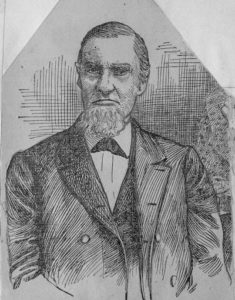
William Cratty
Cratty, born in Pennsylvania in 1805, moved to Delaware County in 1814 with his father. During his time as a conductor, Cratty assisted over 3,000 escaping slaves into freedom. His involvement in the Underground Railroad was not without its dangers, and Cratty had a $3,000 bounty on his head for whoever could deliver him, alive or dead, south of the Mason-Dixon line.
Cratty was extremely cautious, and would not open his door at night without first checking to see if it was a fugitive or a vengeful slave catcher. Cautious as he was, though, he was also very outspoken about his stance against slavery and even publicly announced to Congress that no acts it could pass would make him stop his work on the Underground Railroad. The slave catchers never did attack him, and he lived a long life after the Civil War.
The Collins Family
The Collins Family
Nancy Wilson and Nathaniel Collins were the parents of James, Theodore and Thomas Wilson Collins. The entire family worked as abolitionists in the Ripley area, aiding people like John Rankin and John Parker in everything from retrieving fleeing slaves from across the border in Kentucky to hiding them in their corn fields. Theodore and Thomas Wilson co-founded the Ripley Anti-Slavery Society. Thomas Wilson was also instrumental in the rescue of Eliza Harris, an escaped slave who would later serve as a model for the main character in Harriet Beecher Stowe’s acclaimed book, Uncle Tom’s Cabin.
Keifer and John Croco
Keifer and John Croco
Peter and Rebecca Croco moved to Holmesville from Pennsylvania in 1818, and among their many children were sons Keifer and John. As adults, the brothers continued to live in Holmesville: Keifer in his father’s home and John at a nearby farm. Both of the men were active abolitionists and frequently assisted escaping slaves.
Each man’s home was equipped to hide fugitives — Keifer’s contained a hidden trapdoor into the attic, and John had a cellar. The brothers were also involved with the local abolitionist community. One story tells of one of the brothers rushing on horseback to warn neighbor William Hutcheson — who was housing 20 fugitives — that slave catchers were nearby. They were all able to escape. The brothers also had many enemies, and in one instance John was attacked by a mob of enemies. His skull was crushed, but surgeons covered his brain with a gold plate and he continued life normally.
Henry Curtis
Henry Curtis
Curtis was an abolitionist well-known for his family home (Round Hill) and the house he built later occupied by his granddaughter.
Curtis was born on November 28, 1799 near Champlain, New York. At 17 years old, he came with his parents to Mount Vernon to study law. For the rest of his life, Curtis spent time as a lawyer, banker, civic leader, city developer and churchman. He was the founding father of the First-Knox National Bank.
The home is rumored to have been a station on the Underground Railroad. Escaping slaves would come through his house, travel to Curtis’s granddaughter’s home, and then through the grounds of a cemetery. The family home was a mansion that had secret connected passageways underground.
Horace Curtis
Horace Curtis
At Little Hocking, eight miles downriver from Belpre, slaves crossing the Ohio River from Virginia looked for a lantern signal to guide them to the Horace Curtis station on the shore.
D
Jim Ditcher
Jim Ditcher
James Ditcher was a conductor on the Underground Railroad prior to the Civil War. James lived in Ironton, which is a town located in Lawrence County. According to the Lawrence County Register, he helped about 300 slaves between 1855 and 1860.
George Dreisbach
George Dreisbach
Dreisbach was born January 13, 1784 and was the brother of Jonathan Dreisbach. There are variations on the spelling of their last name and it is believed to have been changed to Dresbach by George at some time along the way.
George married Catharine Betts in 1809. Both George and his brother Jonathan were conductors of the Underground Railroad in Pickaway County, OH, allowing their land to be used for various purposes including providing shelter for fugitive slaves.
George came to Pickaway County as a War of 1812 veteran. He and his brother donated land from their farms to build the United Brethren church, which still stands today. Both George and Jonathan, along with other family members, are buried in the church cemetery.
Johnathan Dreisbach
Jonathan Dreisbach
Jonathan Dreisbach was the brother of George Dreisbach, both of whom were influential in sharing their lands for a church and cemetery where they and their family were eventually buried. He and his brother donated money for the construction of Otterbein College in Westerville, OH. Before and during the Civil War, Jonathan opened up his barn to be used as a station on the Underground Railroad. Many fugitive slaves took shelter there.
E
F
Robert Fee
Robert Fee
Fee’s father, brother, sister and cousins were all documented conductors of the Underground Railroad. He twice attempted to free a kidnapped and enslaved family, though he failed. He was eventually indicted in Kentucky for slave stealing.
John Finney
John Finney
Finney lived in Springfield Township, Richland County, a few miles northwest of Mansfield. It is stated that during the quarter of a century that he was an Underground Railroad conductor, he helped 3,000 freedom seekers on their way to liberty. Many were brought to his farm home from Iberia, the Quaker settlement in Morrow County, as well as from the area surrounding Lexington and the Owl Creek Quaker settlement north of Fredericktown. Finney was well known for using his wit to evade law officers.
Prior Foster
Prior Foster
Many conductors of the Underground Railroad were pastors of a church or members of the church community. Prior Foster, who was African American, used the space he had to help house fugitives as they went on their way. He had a small place in Harbaugh Corner, where he fed, sheltered and guided the fugitives. He would then accompany them to the ferry to make sure they crossed the Muskingum River safely to Hanging Rock.
G
Gammon Family
Gammon Family
The Gammon House in Springfield, Ohio was a waypoint for runaway slaves on the Underground Railroad. The Gammons were a free black family who owned the house and land. Exact numbers of how many slaves they assisted are unavailable. The eldest son, Charles, died in the Civil War as part of the Massachusetts 54th Regiment.
Ezra Garrett
Ezra Garrett
Garrett owned a home that was used as a stop on the Underground Railroad. Garrett, as a conductor, helped more than 400 slaves to freedom and provided food and shelter in the meantime. Garrett hid runaway slaves under wheat and grain he was hauling to Milan.
Levi Grummond
Levi Grummond
Levi and his wife supported the abolitionist movement by operating an Underground Railroad station on their farm in New Concord, Ohio.
H
William Hanby
William Hanby
William Hanby was born in 1807 in Pennsylvania, and was very influential in his time. When he was a young boy, Hanby moved to Ohio, where he made a living as a saddler. Hanby was converted to the Christian faith and married Ann Miller. In 1837 Hanby became the editor for his church’s newspaper and then was elected bishop in 1845. As a minister, Hanby always publicly expressed his disapproval of the Fugitive Slave Act of 1850, which restricted people from helping fugitive slaves in any way. He used his pulpit as a platform to voice why the act was wrong.
His son Benjamin Hanby worked and helped William provide food and shelter to fugitive slaves. He let the fugitive slaves sleep and live in his barn. As a Christian minister, William Hanby was constantly asked why he decided to break the law by helping fugitive slaves. Hanby always chose “God’s law” over the law of the land, because it was right. Hanby’s homes in Westerville and Rushville, Ohio were both stations of the Underground Railroad.
Eliza Harris Eliza Harris Eliza Harris was a slave in Kentucky owned by a kindly master; however, when he found himself in some financial trouble Eliza was notified that she and her two-year-old son would have to be separated. Having already buried two children, and not willing to lose another, she fled. When she approached the Ohio River she hoped to cross easily over the ice, but it was broken up and floating in large chunks. She found shelter at a nearby home and waited for an opportunity to cross; however, as the day progressed the ice melted more. As night fell she discovered pursuers near the house and decided to cross the river despite the dangers. Hopping from one ice slab to the other, Eliza made her way across while holding her son and was intercepted by abolitionists near Ripley, Ohio. Eventually, she was housed by Levi Coffin in Indiana, who recorded her story, and then made her way to Canada.
Charles Huber
Charles Huber, a tanner in Williamsburg, Ohio, and stationmaster of the Underground Railroad in the city, hid slaves in his house on Gay Street or on his farm outside of Williamsburg. His tannery partner, Marcus Sims, was a free African American man who also helped Huber on the Underground Railroad. Huber would often try to confuse slave hunters by stationing armed guards around his home. This would lead the hunters to believe slaves were hiding there when in reality they were hiding at Huber’s farm miles away. Some sources say Huber helped as many as 500 fugitives escape to freedom.
I
J
Aunt Jenny Aunt Jenny worked closely with John Stone to ensure the safe passage of escaping slaves. She was a free slave living on the Virginia side of the river in Parkersburg. Aunt Jenny would blow a horn to signal to Stone that slaves were crossing the river in a boat. Stone would reply with an owl call to let her know when it was safe for them to cross.
John Jr. and James Jeffery
John Jr. and James Jeffery
These two brothers were both conductors of the Underground Railroad in Paulding County. Both men owned barns that were used as stations to help move slaves. Reports say that when slaves came to John Jr., they would hide in his cistern, then be moved to his barn before being transported. For James, slaves could move a certain stone that would hide them and when they needed transported, they were moved in a false bottom wagon.
Gabe Johnson
Johnson was partners with James Ditcher on leading 300 escaped slaves through Ironton. Johnson grew up in Virginia, a slave state. He remembered the hardships escaped slaves faced in the south. This extensive knowledge was put to good use. He was in charge of handling the organization of helping escaped slaves, but sometimes he would hide them in a coal bank in the back of his house. Johnson and Ditcher helped navigate nearly 65 miles near the river between Portsmouth and Proctorville.
K
Rev. William Keil
Reverend William Keil founded the Lutheran church in Senecaville in 1827. He moved to Senecaville purely to live in a place where slavery didn’t exist. He was the president of the Senecaville Colonization Society of Guernsey County, Ohio. This society’s focus was to grow into abolitionists and lead runaway slaves through the area.
Milton Kennedy
Milton Kennedy
Kennedy only assisted two runaway slaves while living in Portsmouth, Ohio for 45 years. He gave money to one of the two and instructed him on how to get to Cleveland. Kennedy worked on a steamboat and took the other slave to freedom on it. Afterward, he brought 55 freed slaves to Portsmouth, many of whom stayed in Portsmouth.
L
Rev. George Light
Rev. George Light
George C. Light, a Methodist minister who lived on 401 Front St. in New Richmond, Ohio, was an avid abolitionist and member of the American Colonization Society. The Society’s purpose was to voluntarily bring freed slaves back to Africa. The country of Liberia was established from the society’s efforts. Other prominent members of the group included Abraham Lincoln, James Madison, Henry Clay and Andrew Jackson.
Joe Logan
Joe Logan
Logan was a runaway slave from North Carolina who worked as a hostler, someone who looked after horses of those staying in inns, at The Olde Wayside Inn. General David Bradford was an abolitionist who owned the Inn and employed Logan. Logan’s wife, Jemima, was freed by the Williamson family, and when Jemima and Joe reunited, they bought land in West Union. They built a log cabin and used it as an Underground Railroad station.
Benjamin Lundy
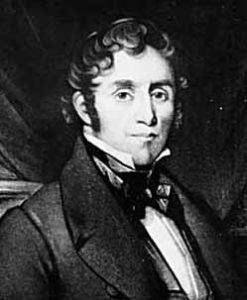
Benjamin Lundy
One of the earlier abolitionists, Lundy is sometimes called the “father of abolitionism.” He was born on January 4, 1789 in Hardwick, New Jersey. In his late teens he became aware of the terrible presence of slavery, and after moving to Ohio he established an anti-slavery association called the Union Humanitarian Society in 1815. The group grew quickly, and Lundy was outspoken about the need for such groups in other places. He also formed his own anti-slavery paper called the Genius of Universal Emancipation, which he continued to produce as he traveled around America.
Lundy didn’t stick around Ohio, walking hundreds of miles to other states to further his abolitionist agenda. He eventually formed a friendship and professional relationship with William Lloyd Garrison, another well-known abolitionist, who later wrote that Lundy “multiplied antislavery societies in every quarter, put every petition in motion relative to the extinction of slavery in the District of Columbia, everywhere awakened the slumbering sympathies of the people, and begun a work, the completion of which will be the salvation of his country.” Lundy was almost beaten to death by a slave trader in 1828 but survived until 1839, when he died of a fever.
M
Catherine 'Kitty' and Thomas McCague
Catherine “Kitty” and Thomas McCague
The prosperous couple owned a pork-packing factory in Ripley, Ohio, which funded a house that became known to local abolitionists and conductors as the North Star Station. After Eliza Harris and her son’s rescue (who served as a model for the main character in the book Uncle Tom’s Cabin), they stayed at the McCague house where they were clothed and fed. In 1861, the McCagues aided President Abraham Lincoln by funding the equipment and pay of 100,000 volunteer soldiers. Along Ripley’s Main Street there is a Liberty Memorial, erected in 1912, that features Thomas McCague along with his fellow agents, John Rankin and John Parker.
William McClain
William McClain
McClain was a riverboat captain on the Ohio River, often ferrying runaway slaves across the Ohio River from the slave states of Virginia (now West Virginia) and Kentucky. McClain usually brought the runaway slaves to J.J. Minor, who resided in Portsmouth, Ohio.
Thomas Miller
Thomas Miller
Miller was an English immigrant in Medina county. In 1841, he built his house on some farmland. This house was used to help runaway slaves by having secret hiding places spread throughout the house. The hiding places included a spot behind an ordinary looking fireplace and a trapdoor inside the floor, which led to a barn.
Abraham Morris
Abraham Morris
Morris helped slaves escape during General John Hunt Morgan’s raid of Ohio.
Joseph Morris
Joseph Morris
Morris was a Quaker in Morrow County. Morris led one of the more important stations of the Underground Railroad; his house was recognized as a stronghold for abolitionists. According to the Morrow County Sentinel, no records have shown that any escaped slaves that entered through his house were ever recaptured.
Thomas Morris
Thomas Morris
United States Senator Thomas Morris (1776-1844) is buried in Old Settlers Cemetery in Bethel, Ohio, the final resting place for many abolitionists. During the years of 1836-1839, he was the only senator to openly speak out against slavery. He was admitted to the bar in 1804 and began practicing law in Bethel after moving from Clarksburg, in what is now West Virginia. He lost a bid for vice president on the Liberty Party ticket in 1844, dying shortly thereafter.
N
Eli Nichols
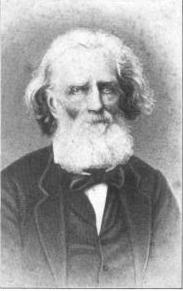
Eli Nichols
Nichols was a conductor on the Underground Railroad in New Castle, Ohio.
Nichols’ parents raised their son as a Quaker, but as an adult, Nichols ended his membership in the Society of Friends. He became a farmer and also worked as one of the first attorneys in Belmont County. Later Nichols became involved in politics, winning election to the Ohio legislature.
Nichols was also active in the abolitionist movement. Despite facing bodily threats from pro-slavery people, Nichols routinely made presentations on slavery’s injustices. He served as a conductor on the Underground Railroad, opening his home to fugitive slaves. Most runaway slaves whom Nichols aided escaped from eastern Tennessee and Kentucky.
O
Charles Osborn
Charles Osborn
Charles Osborn was born in North Carolina in 1776. Osborn was an active member of the Quakers, who were very influential in the Underground Railroad and abolition of slavery. As an outspoken person of his faith, he often sought people to convert and also had no problem speaking about his opposition to slavery. Osborn started an abolitionist society in 1815 in Tennessee and then eventually moved to Mount Pleasant, Ohio. He published the anti-slavery newspaper called The Philanthropist. His goal was to educate Northerners about the injustice of slavery.
In the United States, The Philanthropist was the very first anti-slavery newspaper and Osborn became a leading abolitionist in Ohio. The paper continued to be published and encouraged Quaker faith and lifestyle, as well as opposition to the enslavement of African Americans. A proposal came up that included the “gradual” ending of slavery, but the paper rejected it. Osborn felt as though an immediate end to slavery was the only way. In 1847, Osborn went back to Indiana and died in 1850. Much of his efforts are still recognized today.
P
James Poage
James Poage
Virginian James Poage moved himself, his family and his twenty slaves to Ohio, where he promptly freed all of his slaves in Ripley. Others who were against slavery and wished to free their slaves followed his example, helping to give Ripley a reputation among their Kentucky neighbors as “an abolitionist hellhole.”
John Price
John Price
Price was a fugitive slave who became the face of the Oberlin-Wellington Rescue in 1858. In 1858, Price was arrested in Oberlin, Ohio at 18 years old. He ran away from his Kentucky slaveholder. This was at the time of the Fugitive Slave Law, which required the government to help slaveholders recapture their fugitive slaves.
In order to avoid conflict, Price’s slaveholder arrested and took him to Wellington, a nearby town, and hid him in a local hotel. However, Oberlin residents, who were abolitionists, heard about the capture of John Price. A group of residents traveled on foot to Wellington and stormed the hotel, where they found Price hidden in the attic, and brought him back to Oberlin.
Q
R
John Rogers
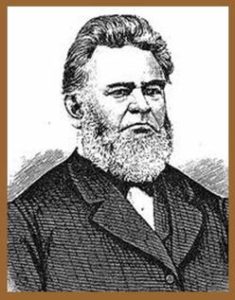
John Rogers
Rogers, a medical doctor who had 60 years of practice, was the first president of the Clermont County Anti-Slavery Society, an abolitionist group, in 1836. He was also a Liberty Party candidate for office and a member of the Chieftains of Liberty vigilance committee, which was set up to protect James G. Birney’s paper The Philanthropist from pro-slavery mobs. Rogers himself would guard the paper’s office by pacing the New Richmond streets. He’s also noted for delivering Ulysses S. Grant in 1822.
S
Wilbur Siebert
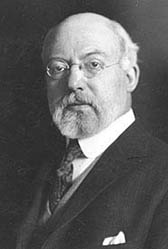
Wilbur Siebert
Siebert was a Professor at The Ohio State University who researched a lot about the Underground Railroad. He published two books called The Underground Railroad from Slavery to Freedom and The Mysteries of Ohio’s Underground Railroads. There is a digital collection of these works and materials, where you can see the original photos and correspondence of participants as well as maps in connection to Ohio and the Underground Railroad.
Siebert started this research about the Underground Railroad by talking with his students at OSU and gathering what they had heard and learned about the Underground Railroad from their parents and grandparents. He also would travel around the routes and conduct interviews with Underground Railroad agents as well as former fugitive slaves.
Will Sleet
Sleet was one of only two known African American conductors of the Underground Railroad in Clermont County. He hid slaves on his property at 411 Harrison St., Felicity, Ohio. The fugitives would hide in his home or his barn, which he dubbed “Canada” to represent what was often the fugitives’ first stop in Ohio on the road to freedom.
Joseph Stillguest
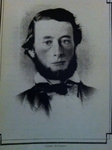
Joseph Stillguest
Stillguest was a runaway slave who inspired the name of the Stillguest Settlement. This settlement was predominantly an African American community where many former slaves arrived to find employment as farmers. Stillguest served as a conductor on the Underground Railroad and opened his home to runaway slaves. He eventually moved to Urbana, Ohio, where he continued his activism. Despite the growing opposition to slavery by some whites during the early 1800s, communities like the Stillguest Settlement show that prejudice still existed in Ohio during the years before the American Civil War.
Rush R. Solane
Rush R. Solane
Solane was a lawyer and an abolitionist in Sandusky County. In 1852, during an anti-slavery protest, three men from Kentucky claimed to have owned seven escaped slaves. Solane petition the mayor to investigate the case. At first, the slaves were ordered to be set free since the men didn’t have any authority. Not long after, one of the men from Kentucky submitted documentation and sued Solane under the Fugitive Slave Act. He was fined thousands of dollars, but the African American community showed their appreciation by presenting him with a silver-headed cane.
John Stone
John Stone
Stone and his wife Charlotte Putnam Loring inherited land in Belpre, Ohio, overlooking the river along the West Virginia border. There he would watch for escaping slaves crossing the river that he would hide in the corn fields on his property. Banding together with his neighbors, John Stone helped to create a transport system from Washington County, Ohio to Canada. Stone spent his entire life in Belpre, becoming an abolitionist at a young age after witnessing a slave being captured close to the Ohio River.
Harriet Beecher Stowe
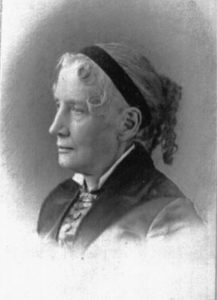
Harriet Beecher Stowe
Harriet Beecher was born June 14, 1811 in Litchfield, Connecticut. She is most famous for her novel, Uncle Tom’s Cabin. In her younger years, Harriet became active in the school life and provided sketches as well as stories to local journals. She married Calvin Ellis Stowe, who was a clergyman and seminary professor.
Harriet Beecher Stowe lived in Cincinnati for 18 years and came in contact with fugitive slaves as she lived very close to a southern plantation. She heard about slave experiences and slave life from friends, family and visits to the south.
Harriet eventually moved to Maine with her family and began to write about slavery. She drew her inspiration from abolitionist literature and her own observations in Ohio and Kentucky. This eventually turned into Uncle Tom’s Cabin.
Harriet died July 1, 1896 in Hartford, Connecticut.
Levi and Milton Sutliff
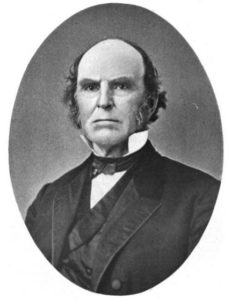
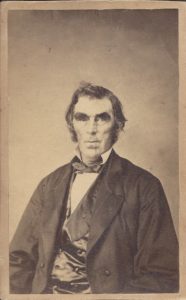
Levi and Milton Sutliff
Although very different in terms of their careers, the Sutliff brothers were both influential to the abolitionist movement. Levi was born in 1805 and spent many of his younger years helping his father on the farm. He learned law and practiced it for a few years before returning to work on the farm for the rest of his life. Levi was a conductor on the Underground Railroad, and at one point even traveled to what is now West Virginia to help a fugitive remove an 11-pound iron chained to his leg. Levi also established an anti-slavery society in Trumbull County in 1832.
Milton was less active on the Underground Railroad, instead involved in the abolitionist movement via politics. Born in 1806, Milton stayed in school and graduated from Western Reserve College in 1833. Thanks to an agency from the Western Reserve Anti-Slavery Society, he traveled and spoke at length about his anti-slavery views for nine months. Later he ended up passing the bar and setting up his own law practice in Warren. Milton was elected to the Ohio Senate in 1849 and the Supreme Court of Ohio in 1857, where he continued to speak against slavery. He practiced law for the rest of his life and died in 1878.
T
Nathan M. Thomas
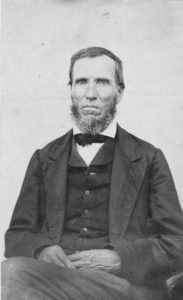
Nathan M. Thomas
Thomas was born on January 2, 1803, in Mt. Pleasant in Jefferson County, Ohio. His family comprised practicing Quakers who strongly opposed slavery. Thomas attended a school taught by Charles Osborn, the publisher of the first anti-slavery newspaper in the United States of America. Benjamin Lundy, the founder of the first anti-slavery society in Ohio, also resided with the Thomas family. As a youth, Thomas became fascinated with medicine. He received some medical training in Mt. Pleasant. Thomas eventually enrolled in and graduated from the Medical College of Ohio in Cincinnati. Upon graduating in 1828, Thomas opened a practice in Columbiana County, Ohio, before he relocated to Kalamazoo County, Michigan in 1830.
In Michigan, Thomas continued to practice medicine. He also became an active participant on the Underground Railroad. Thomas opened his home to fugitive slaves, assisting as many as a dozen runaways at a single time. It is estimated that Thomas helped up to 1,500 fugitives attain freedom in Canada. In 1839, Thomas also helped establish the first anti-slavery newspaper in Michigan.
William Thompson
William Thompson
Thompson (1835-1940) was an abolitionist who started working the Underground Railroad as a teenager, guiding fugitives from Bethel to the Elklick area near Williamsburg. Thompson practiced medicine for 80 years and lived at 213 E. Plane St., Bethel, Ohio. It’s rumored that he would, on occasion, shoot the dogs that were trying to track fugitives.
U
V
W
Thomas Woodson
Thomas Woodson
The early life of Thomas Woodson and his wife Jemima are often a point of speculation, as it is hypothesized that Thomas Woodson may have been one of the children descended from Thomas Jefferson and his slave Sally Hemings. Though DNA tests and historians have not come to a solid conclusion on the subject is that by 1829 the couple had found themselves in Ohio’s modern-day Jackson County. There they started a community of independent African Americans known as Berlin Crossroads where Woodson helped to start the African Methodist Episcopal (AME) church, the first independent African American Church West of the Alleghenies. His prosperity helped shape a thriving community of free African Americans who were able t serve as a tight network of Underground Railroad stations for escaping slaves throughout Berlin Crossroads and the greater Jackson County area.
Elizur Wright
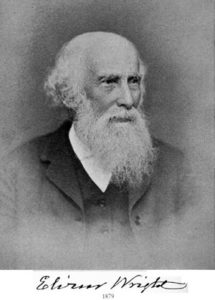
Elizur Wright
Wright, born in 1804, moved to Tallmadge, Ohio with his family in 1810. After his young years, he attended and graduated from Yale College, and several years later accepted a mathematics and philosophy teaching position at Western Reserve College in Hudson. While teaching at the college, Wright discovered the writings of William Lloyd Garrison and developed a strong belief in the immediate emancipation of slaves.
Wright did not stay in Ohio, moving to New York City in 1833 to assist in organizing the American Anti-Slavery Society. He served as the secretary for the society for six years, during which he was responsible for the daily operations of the society as well as many of its publications. Wright’s involvement in the abolitionist movement decreased as he became alienated from his peers due to religious differences, but his work up to that point was extremely valuable to the abolitionist cause.
X
Y
Z
